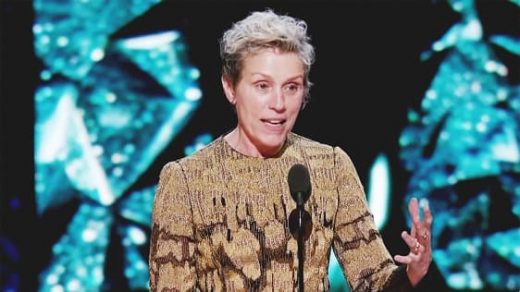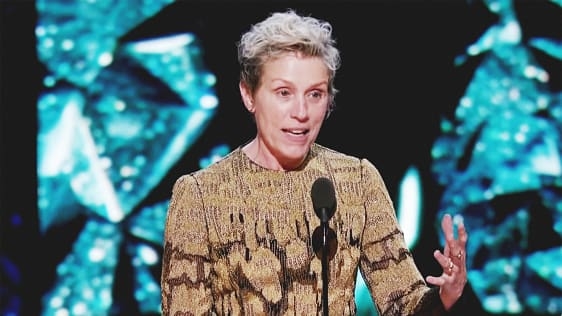What Is An Inclusion Rider? Explaining Frances McDormand’s Oscars Speech
During her acceptance speech for Best Actress at last night’s Oscars, Frances McDormand dropped two words that left most people scratching their heads: inclusion rider.
McDormand asked all the nominated women in the audience to stand up and be recognized in one of the night’s most rousing moments. “Look around everybody–look around, ladies and gentlemen because we all have stories to tell and projects we need to be financed,” McDormand said. “Don’t talk to us about it at the parties tonight. Invite us into your office in a couple days or you can come to ours, whichever suits you best. And we’ll tell you all about them. I have two words to leave with you tonight, ladies and gentlemen: inclusion rider.”
So what exactly is an inclusion rider?
Attorney Kalpana Kotagal and Stacy Smith, founder and director of the University of Southern California’s Annenberg Inclusion Initiative, came up with the idea in 2016 and essentially it’s legal language actors can bake into their contracts to ensure more diverse representation in background actors and extras.
“What we’ve tried to do is to create a process that enables the development of a really diverse pool,” Kotagal says. “And so we say in this rider that for all of the smaller roles on screen, not the roles that might impact financing of the project, but for the policeman, the teacher, the plumber, the guy who comes to fix the house, there’s no reason that any of those should be cast with a particular stereotype in mind.”
And should a studio not meet the requirements of an inclusion rider, Kotagal says an actor may handle a breach of contract how they see fit but she’s hoping that talk of inclusion riders will become part of the public conversation around diversity in Hollywood.
“We hope as we go forward that the profile of these issues will be raised in such a way that there’s a public consequence for failing to comply,” Kotagal says. “We have also worked to create a scholarship fund so if the studio has failed to comply with parts of the rider, there’s an opportunity for a good faith contribution.”
Kotagal stresses that the inclusion rider isn’t about hitting a quota–it’s to ensure that studios are following best practices in their hiring processes. She says that initially, the idea was to go straight to studio heads, but they decided it would be best for this to start with the actors themselves. Even though Kotagal doesn’t have an exact figure of how many actors have asked for an inclusion rider, she says she’s aware it’s something that’s gaining traction.
“There’s no question that Hollywood has had a problem for a long time both in terms of who is seen on screen and who drives the making of films behind the scenes. And so we wanted to figure out a relatively straightforward easy solution for those who wanted to use their bargaining power to help drive that change could use,” Kotagal says. “This tool relies on actors to say, ‘we want to use our power to help drive the change in the industry.’ And we fully believe, and I think last night is really a testament to this, that as these practices get out there more, there’s no reason they can’t be industrywide best practices.”
(15)














